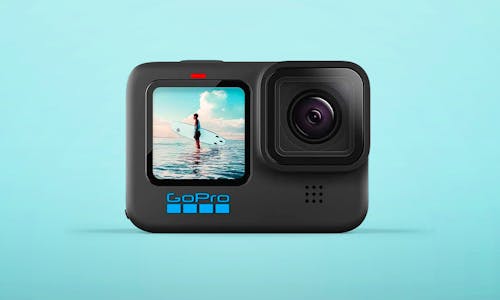
Our HTC Evo 3D review model has just turned up and we’ve duly liberated it from its card and plastic prison. It’s virtually identical to the one we got to have some hands-on time with earlier in the year, boasting the same gold trim around the camera unit and the same model number on the back underneath the battery.
First impressions: so far so good. Whether you’re bothered about 3D or not, our first impressions of the Evo 3D are all good. The various menu animations and the rotating HTC Sense widgets scroll with a greater fluidity than they do on the HTC Sensation. And we also liked that the old ‘Home + Power Button’ trick we’re so fond of allows you to take screengrabs as well. So right from the word go, we’ve got a lot of love for the Evo 3D.
All the same we thought you’d appreciate a quick gander at the Evo 3D’s angles before our full review proper goes up. While you’re here, you can check out our earlier Evo 3D hands-on pics for a quick refresher.
This review sample we’ve been given is also not a proper representation of what you’ll get in the box when you open up your Evo 3D; the supplied mains charger was a 2-pin European type not the regular UK one. So this doesn’t strictly adhere to the usual Recombu What’s in the box? guidelines, hence the different than normal title.
We understand though that you’ll get the mains adapter, USB wire and headphones supplied as standard.

Holding in the power button on the top right and tapping the Home key allows you to take screengrabs of whatever’s on the screen at any one time. Awesome, no lengthy installing of drivers and enabling debug mode. We’re glad that phone makers are finally enabling this feature in Android phones.

The HTC Sense widgets just whizz around on the Evo 3D’s screen. Everything feels a little bit faster than it does compared to the HTC Sensation; maybe that extra bit of RAM (1GB compared to the Sensation’s 768MB) does count for something after all.

Behold the retina-shredding power of the Evo 3D’s 3D camera. It’s nigh on impossible to properly recreate the effect that viewing a 3D screen has on your eyes by simply taking a picture of it with an SLR. But we hope that you get a general idea of how the Evo 3D’s cameras focus on a static object like this ball.

The HTC Evo 3D saves 3D pictures as either .mpo (Multi Picture format – the same as the Nintendo 3DS does) or as .jps (stereo JPEG images, one for each eye).

3D pics on the Evo 3D apparently work best when you take them horizontally/in landscape mode.

The maximum resolution of the Evo 3D when shooting 2D pictures is 5-megapixels. For 3D pictures, this is reduced to ‘up to’ 2-megapixels, less than half.

It’s dead easy to switch between 2D and 3D on the Evo 3D. The big chunky shutter key to the right here, combined with the boxy design gives the Evo 3D the look and feel of a point-and-shoot digital camera.

The micro USB charging port on the side, 3.5mm jack and power button on the top; standard.

The rugged-looking rubbery battery cover of the Evo 3D peels off really easily, while clipping back into place securely.

The SIM card slot at the top; you’ll need to take the battery out to get at it. But thankfully the microSD card can be swapped out without having to do so. Just lift the battery cover up, swap the card and you’re done.

The HTC Evo 3D’s innards, looking very much like they did a couple of months ago. Hardly anything has changed from when we first saw the Evo 3D in the flesh. Our first impressions have been all good so far, but we wonder how long that battery is going to last. On then, with the full review.

Leave a Reply